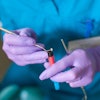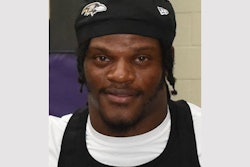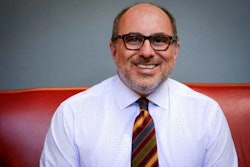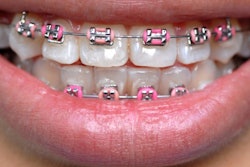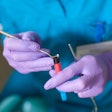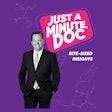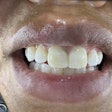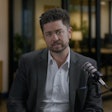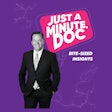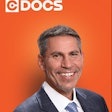During the recent Dentsply Sirona World meeting in Las Vegas, I had the privilege to speak with Jill Uhryniak, group vice president, orthodontics and aligner solutions for Dentsply Sirona. In our wide-ranging conversation, Uhryniak touched on topics ranging from AI to trends with adults and orthodontia.
Kevin Henry: Let's start with AI and how it’s changing treatment planning, patient monitoring, and orthodontics overall. What’s your perspective?
Jill Uhryniak: Patient treatment will always be in the hands of the practitioner. I see AI being used in the workflows that help a practice run smoothly. In treatment, AI has the potential to suggest different treatment options or to simplify what might now be very manual processes. But in the end, it is still very much a clinician’s decision with consideration of the patient's preferences. AI can also improve back-end system processing. It's not just customer-facing, it's optimizing the entire process. You can think of the "A" as "assisted," not just "artificial."
Q: Is that exciting for you?
A: Absolutely, yes. There is such an influx of new ideas for how to incorporate AI in orthodontics. What is important for us is that we work together with our customers to determine the most valuable ways to integrate this exciting technology, because doing AI for AI's sake doesn't really mean anything. It's really about how to support their day-to-day practice, improving outcomes for their patients, removing stress where we can, and allowing the headspace for the complex decision-making they're trained to do.
Q: Where do you see the adult orthodontic market right now, and where do you see it in 2026?
 Jill Uhryniak, group vice president, orthodontics and aligner solutions for Dentsply Sirona.Dentsply Sirona.
Jill Uhryniak, group vice president, orthodontics and aligner solutions for Dentsply Sirona.Dentsply Sirona.
A: It continues to be a really interesting space. During the pandemic, our faces became a larger part of our identity with the adoption of virtual meeting tools and online social communities.
That continues today. Also, there is a growing recognition that optimal tooth alignment is linked to systemic health and overall wellness. Poor oral health can be linked to malocclusion, which can contribute to periodontal disease due to potential challenges maintaining proper oral hygiene. A number of studies have also associated poor oral health with chronic conditions such as diabetes and cardiovascular disease. As adults have more disposable income and recognize the impact of oral health, they want to work with a clinician who can help them improve their smile and maintain it for the rest of their lives.
Q: Are patients driving this conversation more than the orthodontist or dentist?
A: It's a balance. Clinicians focus on the long-term oral health of their patients, serving as trusted partners over time. Culturally, there is a growing conversation about wellness and longevity. Instead of lifespan, we're talking about health span.
Orthodontics plays a role in this shift. As oral health is increasingly recognized as a key component of overall health span, patient demand for treatments that preserve or improve their teeth or bite will continue.
Q: In a society where we want everything now, are you seeing changes in patient expectations around treatment duration?
A: Absolutely. Patients today want things to move quickly, literally and figuratively, but in orthodontics, the goal isn’t just to move teeth fast, it’s to move them smart.
With our SureSmile platform, our philosophy focuses on synergistic tooth movement, making sure forces work together rather than against each other. This approach allows us to deliver efficient, predictable results while protecting the biology of tooth movement.
Because of this precision in planning, SureSmile cases require refinements in only about 30% of treatments, which is significantly lower than industry norms. So while everyone loves the idea of speed, what really matters is moving teeth the right way, for a healthy, stable, confident smile that lasts.
Q: How important is it that the entire team -- not just the dentist or orthodontist -- understands those talking points and can communicate them clearly with patients?
A: Communication, both verbal and nonverbal, starts the moment a patient walks into the office. Patients want an environment with low stress. They can feel the energy of the practice. That's where connected dentistry really comes into play.
With well-structured workflows and predictable treatment plans, everyone knows what comes next. When an unexpected issue arises, the team can handle it with confidence and grace. The result is a calm, organized environment. That atmosphere is an important part of the patient experience. The practice is communicating to the patient that they are in good hands.
Continuous education on oral health is a key part of a patient's journey. In a general practice, patients often stay for many years, allowing the full practice team to build lasting relationships. Even if a patient is not ready to start their orthodontic journey today, conversations over time help them understand their options and feel supported.
By learning each patient’s goals, the entire team fosters trust and connection. When the time is right, whether financially, personally, or clinically, the conversation about orthodontic care is part of the relationship. It's all part of providing patient-centered care.
Q: What demographic or economic trends are you keeping an eye on heading into 2026?
A: Demographic or economic trends change over time. The most important thing for us is to give the clinician options for the best treatment for that patient at that moment.
There are different ways to treat malocclusion. The SureSmile system offers clinicians the ability to treat every patient with the use of clear aligners to robotically bent wires for tooth movement. We also offer indirect bonding trays to support bracket placement, surgical and restorative diagnostic planning for complex cases, and retainers to support post-treatment.
Q: What do you want the public and industry to know about SureSmile when it comes to those choices and where we're evolving as an industry?
A: Our goal is to provide the flexibility clinicians need to provide patient-centered care for the best clinical outcomes. Whether that's aligner treatment, wire treatment, or a hybrid approach, we can help them achieve their goals.
We see treatment using a hybrid approach growing. A patient can be treated with aligners on their upper arch and wires on the lower one, or they may start in one appliance and finish in another. This allows the clinician to achieve high patient satisfaction while achieving the optimal clinical outcomes.
Q: Where is the role of the orthodontist with technology going, and are you excited about it?
A: Oh, yes! Everything in our lives is becoming more connected, and orthodontics is no exception. Advances in technology are making referrals and transitions between providers more seamless. A patient may complete treatment with their orthodontist and then return to their general practitioner for restorative care. Another patient might require orthodontic treatment to create space for an implant, or an orthodontist may collaborate directly with an oral surgeon when surgery is indicated. This level of interdisciplinary integration is powerful and benefits both providers and patients.
I’m equally excited about how technology is involving patients more deeply in their own orthodontic care. Communication tools that deliver reminders, personalized tips, and progress updates help patients stay engaged throughout their treatment journey. Patients can be active participants in achieving their healthiest, most confident smiles.
Q: Give me a prediction for 2026. What is something you think will be very important for our industry next year?
A: In 2026, hybrid orthodontic treatment and the development of intelligent workflows will be something to watch.
Q: We covered a lot today. Is there anything else you want to share with our audience?
A: As technology advances and patient expectations for involvement in their care continue to grow, the future of orthodontics lies in flexibility, collaboration, and personalization. Dentsply Sirona is focused on connecting dentistry, empowering clinicians to deliver efficient, customized, patient-centered care.
The comments and observations expressed herein do not necessarily reflect the opinions of DrBicuspid.com, nor should they be construed as an endorsement or admonishment of any particular idea, vendor, or organization.

